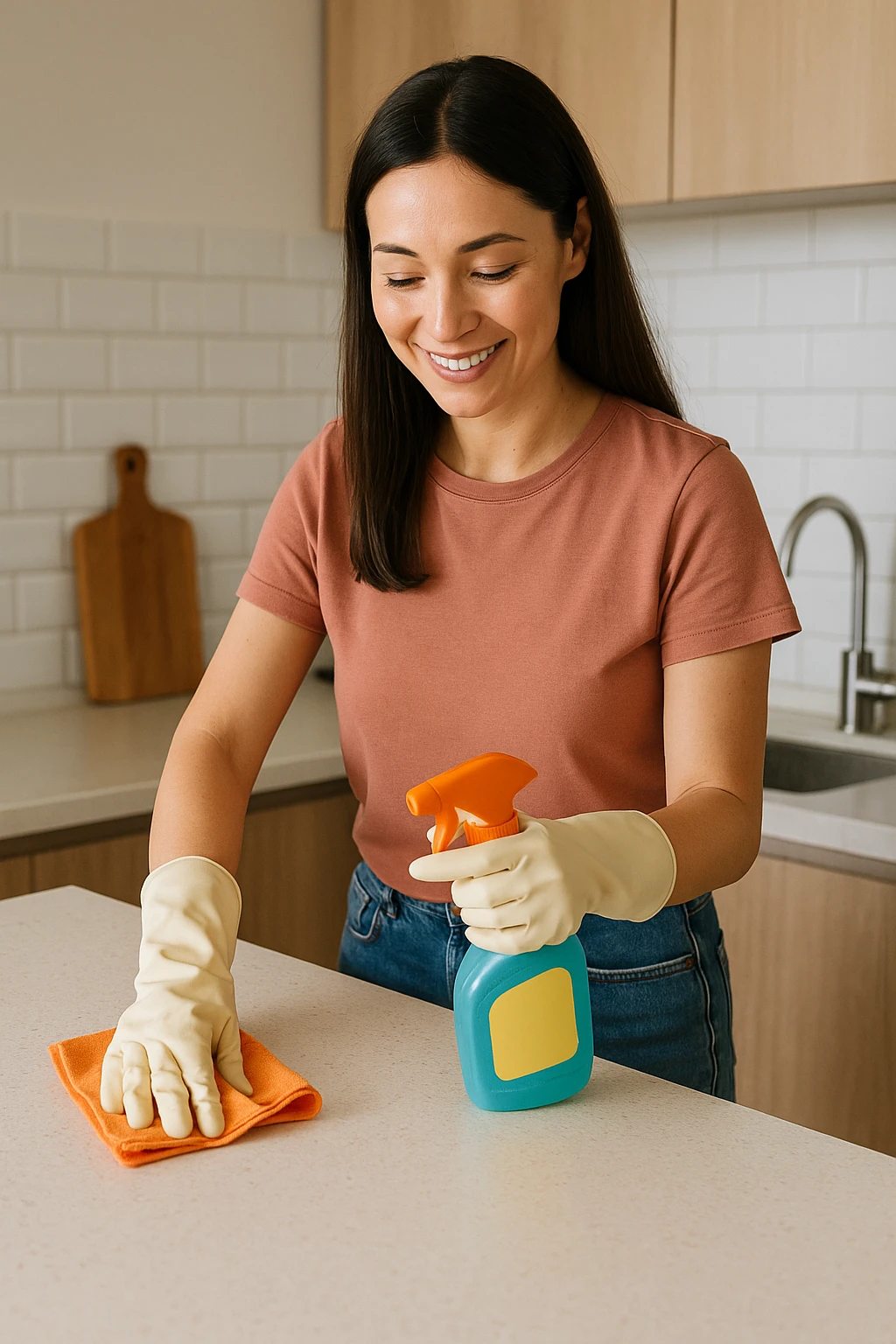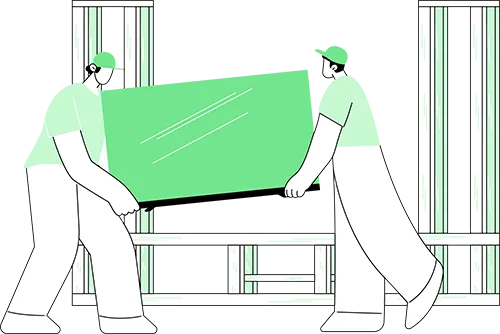🕓 Last updated: September 14, 2025
What Causes Water Stains in the First Place?
Before learning how to clean countertops and remove water stains, it helps to understand what causes them. Most stains are the result of minerals like calcium and magnesium left behind after hard water evaporates. Over time, these mineral deposits can bond with your countertop surface, leaving behind chalky, cloudy, or white marks.
Depending on the type of surface (wood, metal, glass, tile, etc.), water stains may appear as:
- Chalky or cloudy spots
- White or gray marks
- Yellowish stains on porous materials
Identifying the cause is essential, as it helps you select the best approach for how to clean countertops and remove water stains effectively.
Supplies You Might Need for Water Stain Removal
When considering how to clean countertops and effectively remove water stains, having the right supplies is essential. Different surfaces require specific tools, but keeping these items handy will help you tackle almost any water stain at home:
- White vinegar
- Baking soda
- Lemon juice
- Hydrogen peroxide
- Olive oil or mineral oil
- Toothpaste (non-gel, white)
- Microfiber towels or clean cloths
- Soft-bristle brush or old toothbrush
- Wood polish or furniture wax (for wood countertops)
- Glass cleaner or rubbing alcohol (for mirrors or glass surfaces)
With these supplies, you’ll be well-prepared for how to clean countertops and remove water stains from nearly any surface in your home.
How to Clean Countertops: Removing Water Stains from Wood
Wood surfaces are especially sensitive to moisture, so knowing how to clean countertops and remove water stains from wood correctly is crucial.
Try these steps:
For fresh water stains:
- Place a clean cotton cloth over the stain and press gently with a warm (not hot) iron. The gentle heat helps draw out the moisture.
Use white toothpaste:
- Dab non-gel, white toothpaste onto the stain and gently rub with a soft cloth. Wipe the area clean afterward.
Make a baking soda paste:
- Mix baking soda with a little water to form a paste. Rub it gently onto the stain, then wipe dry.
Finish with oil or polish:
- Use a bit of olive oil, mineral oil, or wood polish to restore shine and help protect against future stains.
If you find that the stain is dark, this means the moisture has penetrated deeper than the surface. In these cases, you may need to sand and refinish the wood for the best results.
Knowing how to clean countertops like wood effectively can keep your surfaces looking beautiful for years to come.
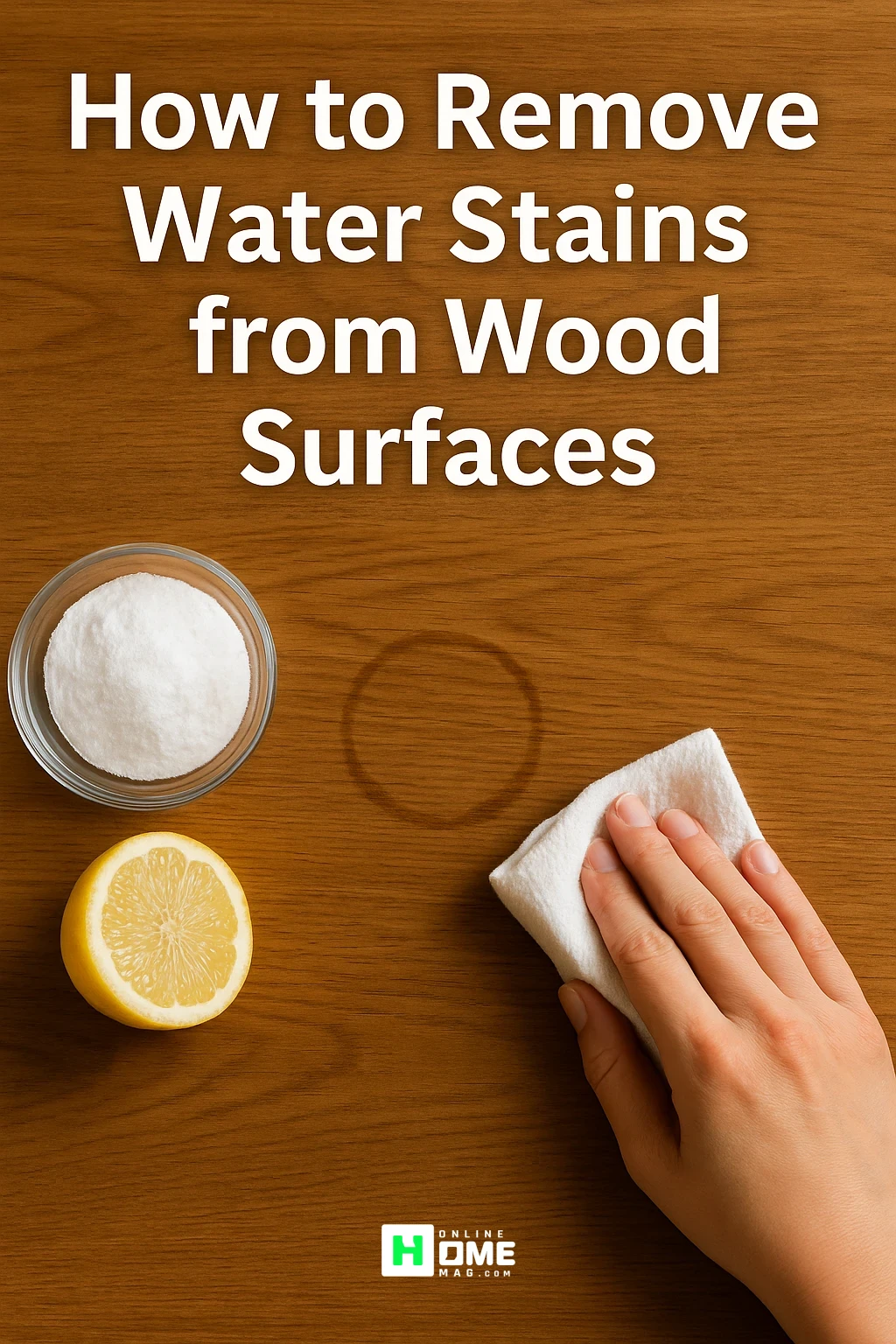
How to Remove Water Stains from Glass and Mirrors
Cloudy shower glass, windows, or mirrors? You’re not alone. Let’s look at how to remove water stains from glass effectively:
- Spray white vinegar directly on the glass. Let it sit 5–10 minutes, then wipe clean.
- Use lemon juice for natural acidity to break down minerals.
- Apply baking soda paste on stubborn areas like shower doors.
- For mirrors: Mix vinegar with rubbing alcohol in a spray bottle. Spray, wipe, and buff dry.
Dry the glass immediately afterward to prevent new water spots from forming.
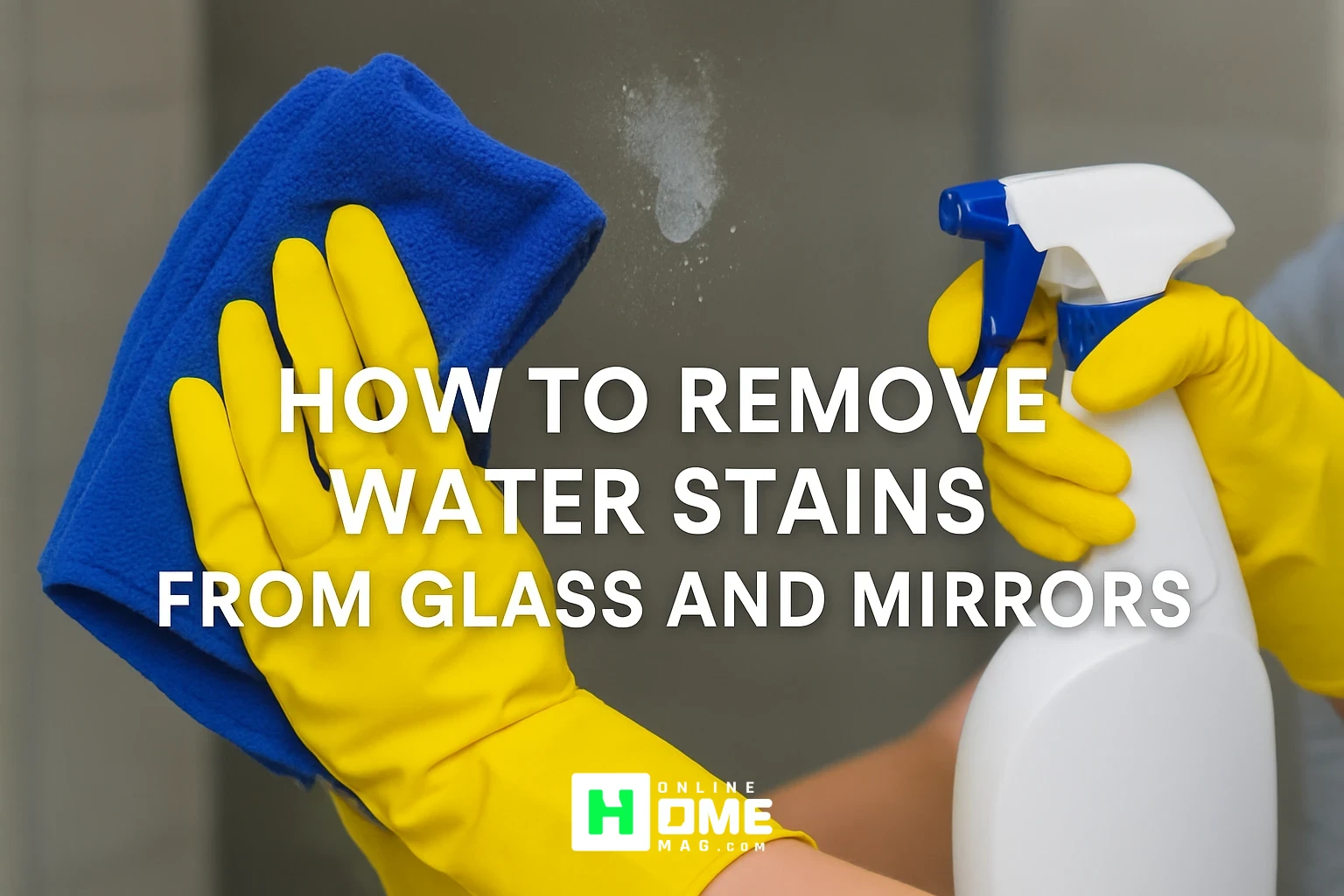
How to Remove Water Stains from Stainless Steel
Hard water spots on stainless steel surfaces are frustrating. Here’s how to remove water stains from stainless steel the easy way:
- Soak a cloth with vinegar, rub the area gently, and wipe dry.
- Apply a few drops of olive oil and buff in the direction of the grain for added shine and protection.
- Avoid abrasive scrubbers — they scratch the surface.
For appliances like refrigerators or sinks, use dedicated stainless steel cleaners as needed.
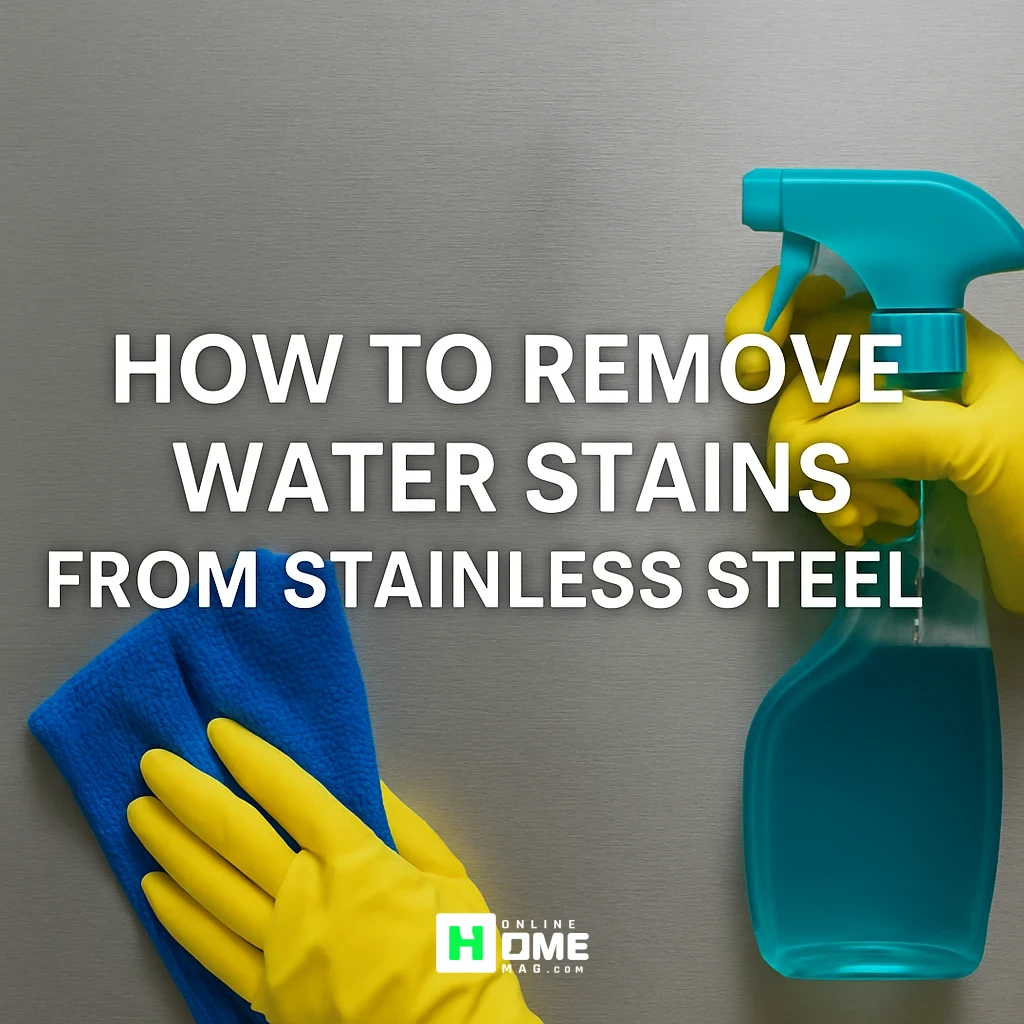
How to Remove Hard Water Stains from Bathroom Tiles and Fixtures
If there’s one place in every home that collects water stains, it’s the bathroom. To master how to remove water stains from tiles and faucets, follow these steps:
- Spray vinegar generously on stained surfaces. Let it sit for 15–20 minutes.
- For stubborn areas, apply baking soda directly or as a paste.
- Scrub with a toothbrush or sponge.
- Rinse thoroughly and dry the surface.
Tip: Mix vinegar and dish soap in equal parts for extra cleaning power — this combo breaks down soap scum and minerals fast.
How to Remove Water Stains from Fabrics
Water stains on clothing, upholstery, or table linens might look like permanent damage — but they’re not! Here’s how to remove water stains from fabric:
- Lightly dampen the stained area with distilled water to prevent water rings.
- Blot gently using a clean white cloth.
- Let the fabric air dry completely.
- For older or darker stains, apply a diluted vinegar solution and blot again.
- Rinse with plain water and allow to dry.
Always check the fabric care label before applying any solution.
How to Prevent Water Stains in the Future
Prevention is just as important as knowing how to remove water stains. These habits can help:
- Always use coasters on wooden furniture.
- Dry surfaces right after use or cleaning.
- Install a water softener to reduce mineral content in tap water.
- Wipe down showers, mirrors, and faucets after each use.
- Use products like Rain-X on glass to prevent future buildup.
- Regularly polish or oil wood and steel surfaces.
Following these steps minimizes future work and keeps your surfaces looking fresh.
Natural vs. Chemical Cleaners: Which Should You Use?
When considering how to remove water stains, should you go natural or use commercial products? Let’s compare:
Natural Cleaners (vinegar, lemon, baking soda):
- Safe, eco-friendly, and inexpensive
- Gentle on most surfaces
- May require more effort or time
Chemical Cleaners:
- Stronger and faster results
- Designed for specific materials
- May contain harsh or toxic ingredients
- Risk of damage if misused
Choose what fits your needs — and always test on a small, hidden area first.
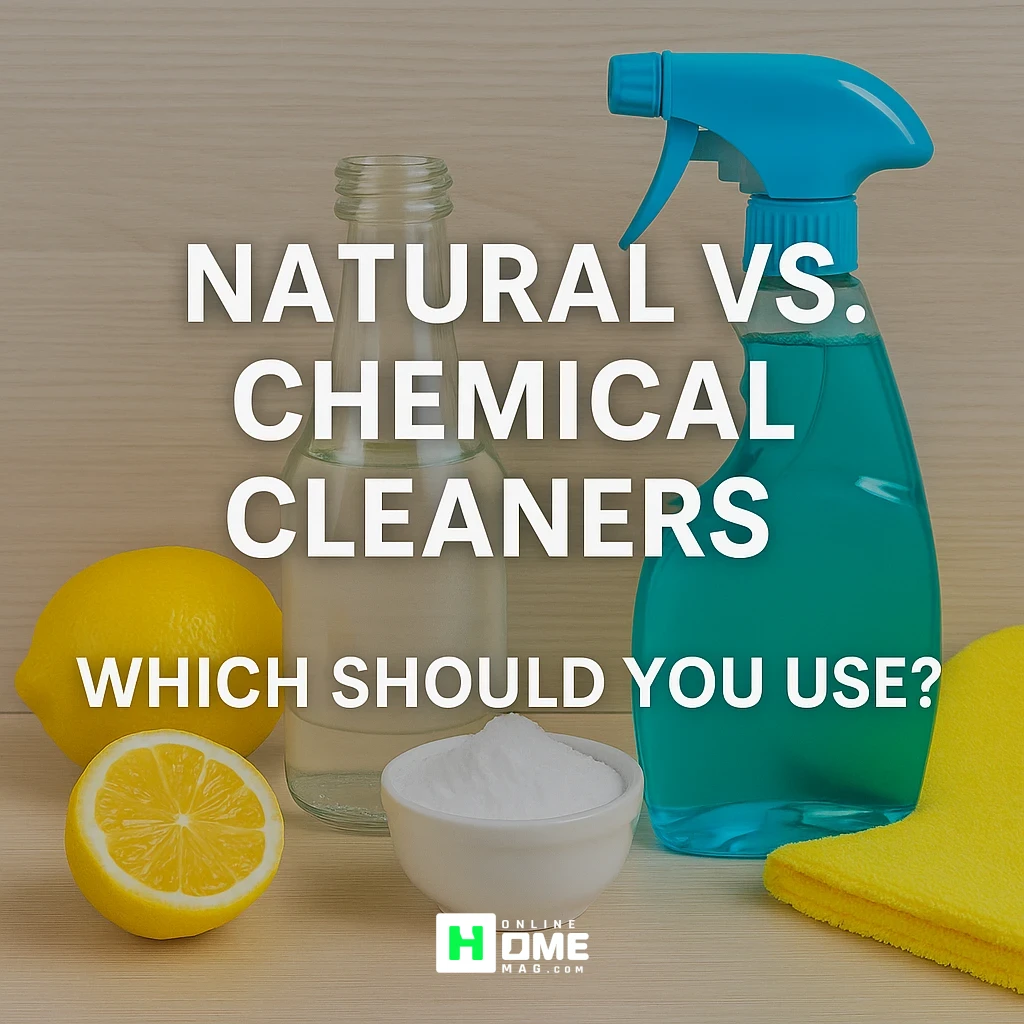
Common Mistakes to Avoid When Cleaning Water Stains
If you’re learning how to remove water stains, it’s just as important to know what not to do:
- Don’t scrub wood or fabric too hard — it can cause permanent damage.
- Never mix vinegar with bleach. It creates toxic fumes.
- Avoid letting vinegar sit too long on natural stone (like marble).
- Always dry surfaces after cleaning to prevent more staining.
- Don’t skip oiling or polishing when needed — it helps repel water in the future.
Proper technique is key to success and surface safety.
Now that you know how to remove water stains, cleaning cloudy glassware, dull furniture, or spotted fixtures doesn’t have to feel impossible. From quick home remedies to pro-level techniques, you have the tools and knowledge to tackle water stains on any surface.
Start with what you have, stay consistent, and enjoy a cleaner, fresher-looking home — stain-free and stress-free.

